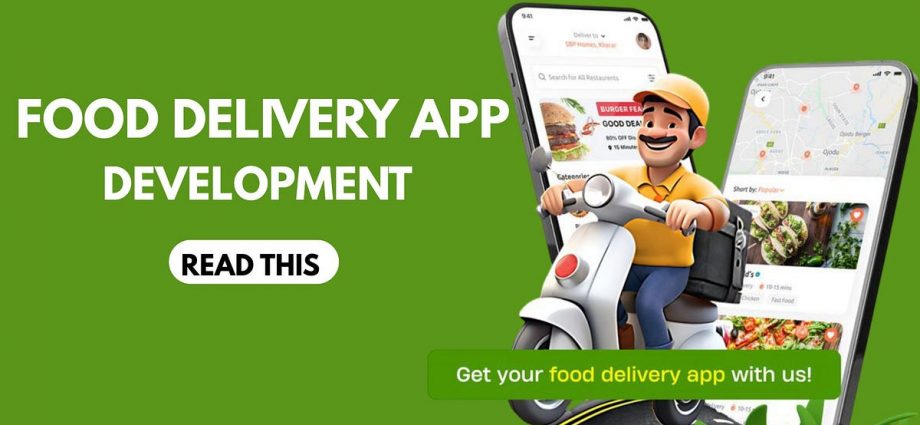Their extensive reach, vast resources, and brand recognition make it challenging for startups to carve out a place in the sector. However, new businesses can still find success by focusing on unique strategies, localized services, and innovative technology in food delivery app development.
If you are an investor looking to enter the food delivery market, understanding how startups can compete with industry leaders will be crucial. This article explores effective ways to build a competitive food delivery app and establish a strong foothold in the market.
Before discussing strategies, it is important to acknowledge the challenges startups face when competing with established food delivery platforms:
- Brand Recognition — Big players have strong brand identities that attract customers effortlessly.
- Funding and Resources — Large companies have substantial financial backing, allowing them to invest in marketing, technology, and partnerships.
- Merchant and Delivery Network — Giants have extensive restaurant partnerships and delivery fleets that provide convenience and quick service.
- Pricing and Discounts — Large platforms can afford to offer frequent promotions and competitive pricing, making it difficult for smaller apps to match them
Despite these challenges, startups can successfully enter the market by focusing on niche segments and providing solutions that larger platforms overlook.
One of the most effective ways for startups to compete is by identifying and serving a specific market niche. Rather than trying to be a generalist like Uber Eats, focus on a particular segment such as:
- Healthy and organic food delivery
- Home-cooked meal services
- Local and independent restaurants
- Hyper-local delivery within small geographic regions
- Specialized dietary requirements (vegan, keto, gluten-free, etc.)
By catering to specific customer needs, a startup can create a loyal customer base that prefers a tailored experience over mass-market services.
Large food delivery companies often charge high commission fees, making it difficult for small restaurants to remain profitable. Startups can attract local eateries by offering lower commission rates, flexible contract terms, and better revenue-sharing models.
Additionally, partnering with local restaurants on exclusive menu items or special promotions can create an appealing value proposition for both the business and its customers.
Many customers feel frustrated when dealing with automated responses and delayed support from major players. A startup can build a reputation for excellent customer service by:
- Providing real-time customer support with actual representatives
- Quickly resolving delivery issues or order mistakes
- Implementing loyalty programs that reward frequent users
Happy customers are more likely to recommend a service and remain loyal even if larger competitors offer aggressive discounts.
Efficient delivery logistics are essential for food delivery startups. Instead of replicating the same model as big players, consider alternative delivery methods such as:
- Partnering with local delivery companies to reduce fleet costs
- Using a hybrid delivery system where some orders are handled by restaurants themselves
- Implementing AI-driven route optimization to ensure faster delivery times
Startups can also explore crowdsourced delivery, allowing part-time drivers to pick up and deliver orders on a flexible schedule.
A well-designed food delivery app is a necessity for success in this space. To stand out, the app should offer:
- Simple and intuitive navigation
- Multiple payment options, including digital wallets and cryptocurrencies
- Real-time tracking of orders
- AI-powered recommendations based on user preferences
- Smooth integration with restaurant systems for order management
Additionally, startups should ensure their app runs smoothly on both Android and iOS devices, avoiding technical glitches that could lead to user dissatisfaction.
Consumers are becoming increasingly aware of sustainability and ethical business practices. A food delivery startup can differentiate itself by:
- Partnering with eco-friendly restaurants
- Using sustainable packaging options
- Implementing carbon-neutral delivery programs
- Supporting local farmers and organic food suppliers
Promoting a brand that aligns with ethical and environmental values can attract customers who prioritize these factors over price and convenience.
Startups should utilize data analytics to improve customer retention and engagement. By analyzing user behavior, order history, and preferences, a food delivery app can provide:
- Personalized discounts and meal recommendations
- Custom notifications based on previous orders
- Predictive ordering, suggesting items before users even search for them
Data-driven personalization enhances customer experience and increases the likelihood of repeat business.
Competing with giants requires creative and cost-effective marketing. Some strategies include:
- Partnering with influencers and local food bloggers for promotions
- Running referral programs to encourage word-of-mouth marketing
- Utilizing hyper-local digital ads targeting specific neighborhoods
- Engaging customers through social media contests and interactive content
A startup should focus on community based marketing rather than spending heavily on traditional advertising.
While food delivery is the primary revenue source, startups can explore additional income streams, such as:
- Subscription-based models offering unlimited free deliveries for a monthly fee
- Sponsored listings where restaurants pay for better visibility
- In-app advertising for local businesses
- Premium features like exclusive chef-curated meals
Diversifying revenue sources helps maintain financial stability and reduce dependency on per-order commissions.
Providing diverse payment methods, including Buy Now, Pay Later (BNPL) options, can attract a wider audience. Additionally, an innovative loyalty program can encourage repeat usage. For example:
- Rewarding customers with points for every order, redeemable for discounts
- Offering cash-back incentives for frequent users
- Introducing gamification elements, such as milestone-based rewards
An engaging loyalty system can help retain users even when competitors offer short-term discounts.
While competing with giants like Uber Eats is undoubtedly challenging, startups can carve out their own space by focusing on targeted niches, strong local partnerships, exceptional customer service, and innovative app features. The key to success lies in identifying gaps in the market and providing unique solutions that larger platforms may overlook.
For investors, supporting a food delivery startup with a well-researched market strategy and innovative technology can yield promising returns. As consumer demands continue to evolve, there is ample opportunity for new players to establish themselves by delivering value where it matters most — customer experience, affordability, and community engagement.


